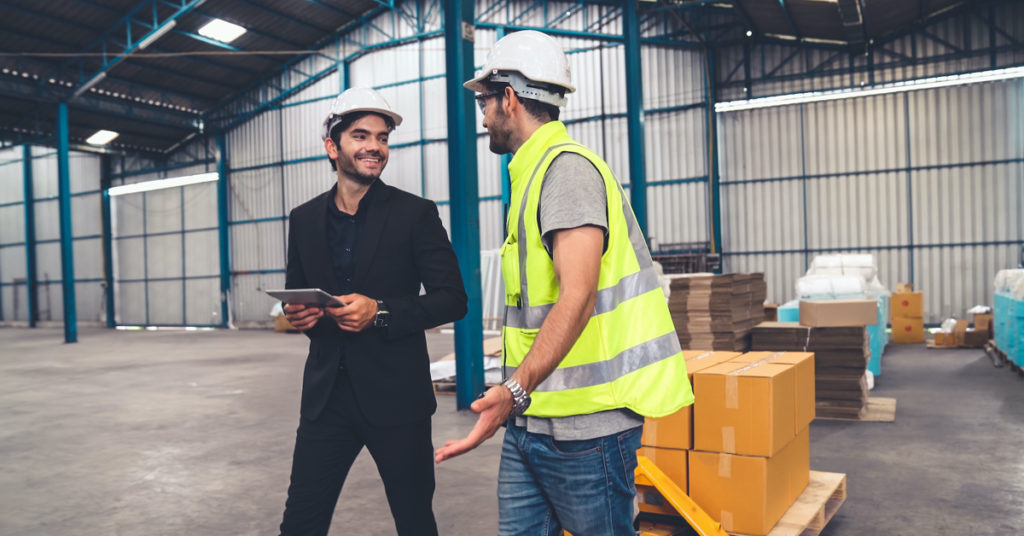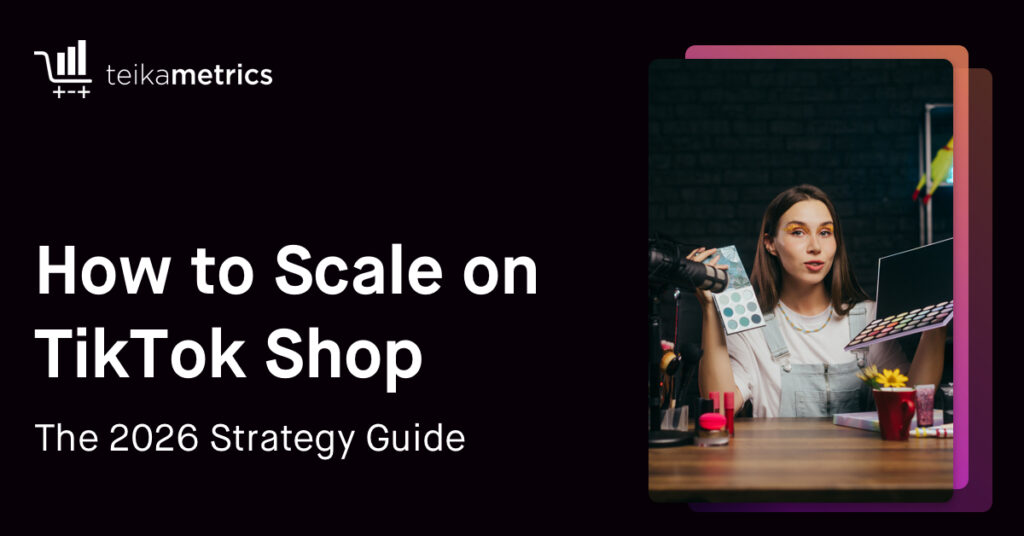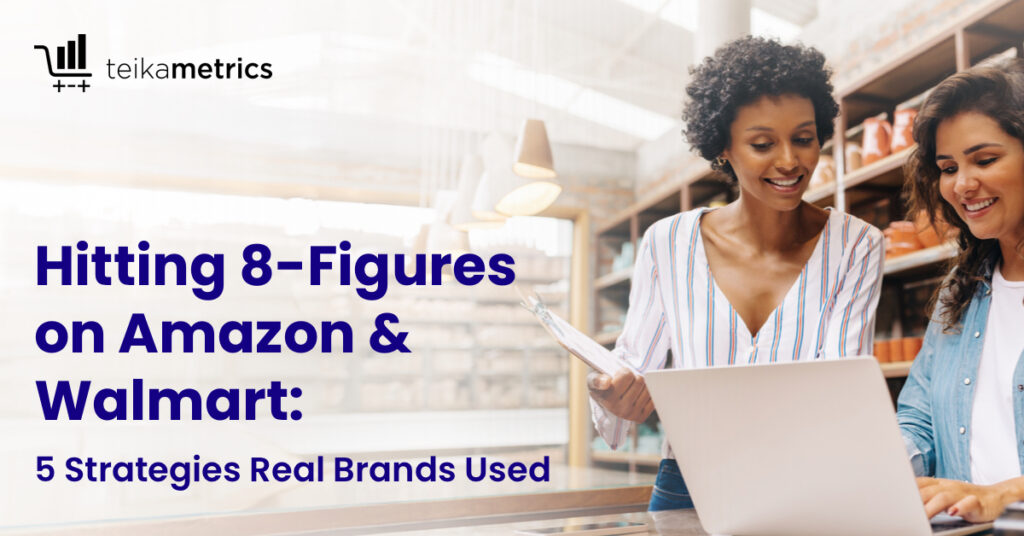Whether you’re a larger or smaller company looking to scale your online operations, Amazon is a great example to look at with regards to increasing productivity, expanding reach, and building profit.
While there are a plethora of factors that have led to Amazon being the ecommerce leader that it is today, its state-of-the-art supply chain model is the most critical element to its success. Amazon launched in 1995 as a website that sold only books. Now, however, Amazon is one of the fastest-growing companies with one of the best supply chain operations in the world.
Amazon’s current supply chain model is similar to the model back in 1995 when the company only sold books online. However, it is much larger in scale and has a range of technological innovations that have helped to streamline both operations and efficiency.
In this article, we’ll explain the key elements contributing to Amazon’s success and what to expect from this supply chain powerhouse in the future.
What is Amazon Supply Chain?
The term Amazon supply chain essentially refers to Amazon’s entire process from product warehousing to inventory management, pricing, delivery, and more. Amazon has optimized each of these elements to ensure that everything is working smoothly and efficiently.
With third-party sellers being responsible for 55% of all sales made on Amazon, Amazon offers two fulfillment options to sellers – FBA and FBM.
Amazon FBA and FBM
FBA (Fulfillment by Amazon) – With this option, Amazon will take care of all logistics and customer support. Third-party sellers will just have to send bulk products to Amazon’s fulfillment centers for them to pick, pack, and ship. For third-party sellers who don’t have logistics in place and are handling small and lightweight products, FBA is usually the better choice.
In addition to the above, Amazon also has an FBA Onsite program where Amazon uses its own warehouse management software to help with optimizing the third-party seller’s warehouse. While third-party sellers will take care of the inventory of their own products, Amazon is in charge of picking up orders from the seller’s warehouse and selecting the most efficient and effective fulfillment method.
FBM (Fulfilment by Merchant) – In this option, third-party sellers will be in charge of listing their products on Amazon and handling all of the storage and fulfillment aspects of the process on their own.
Here’s a chart showing the usage of Amazon FBA among top sellers worldwide:
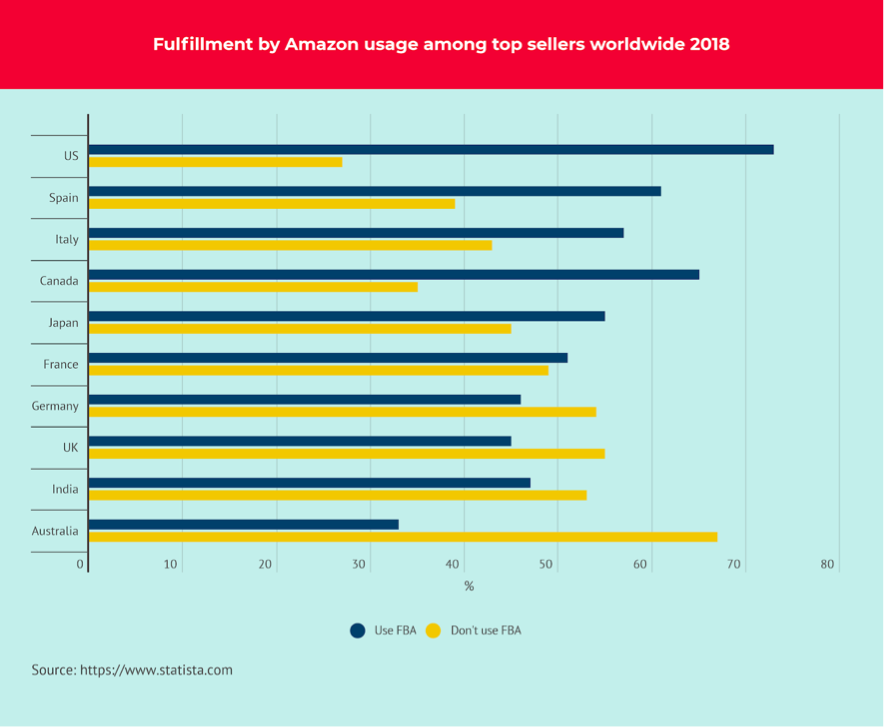
Usage of Amazon FBA
Two main elements of the Amazon Supply Chain
When it comes to Amazon’s supply chain, there are two main elements critical to its success – Amazon Fulfilment Centers and the Amazon Delivery Fleet.
Amazon Fulfillment Centers
With 112 million of Amazon’s customers having a Prime membership and utilizing two-day shipping, it’s vital that Amazon has the fulfillment and logistics network to accommodate these orders.
Currently, Amazon has more than 175 fulfillment operating centers globally in more than 150 million square feet of space. California alone has 21 fulfillment centers while Texas is not far behind with 14. Worldwide, Amazon has an estimate of 500 warehouses located near major metropolitan areas.
Here’s an infographic showing the distribution of Amazon Fulfillment Centers in the United States:
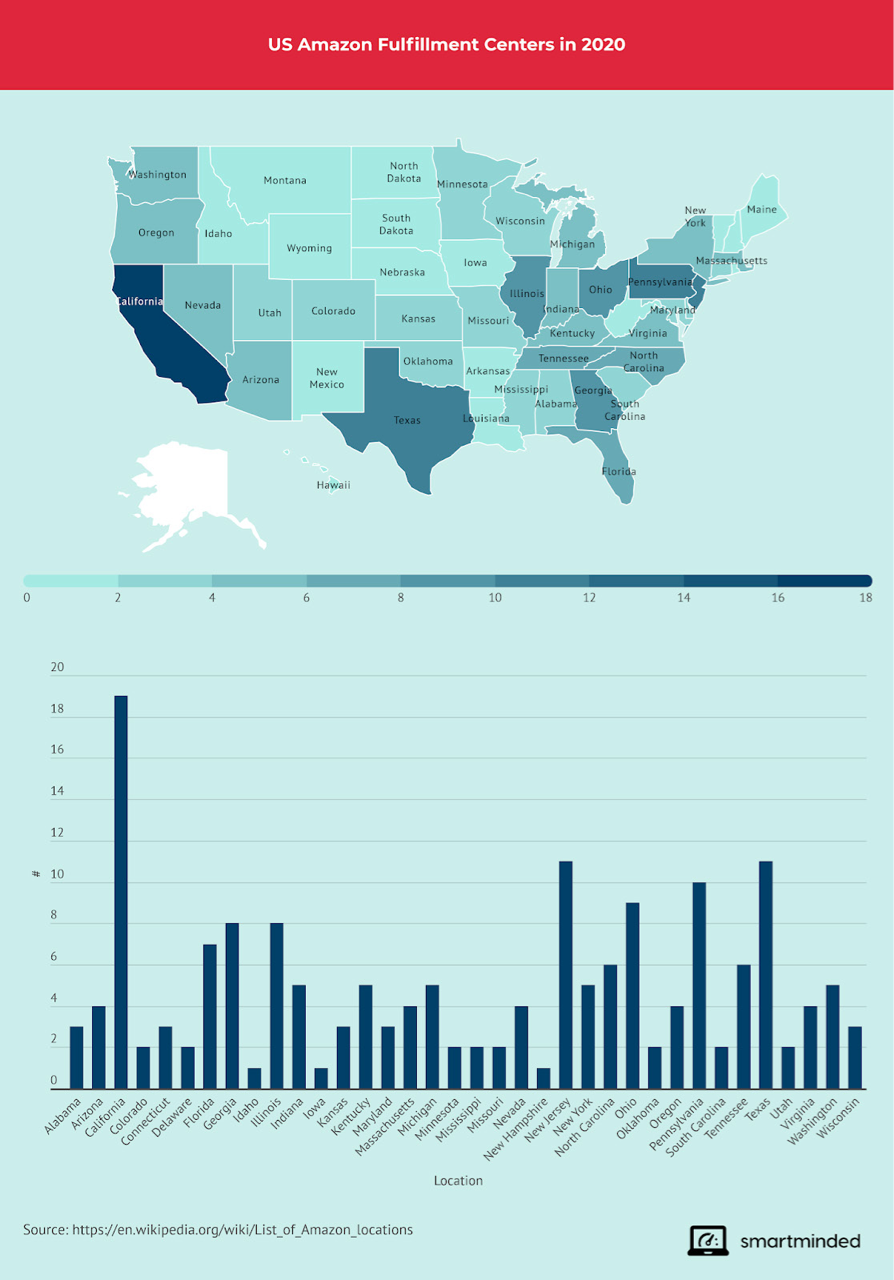
With the COVID-19 pandemic generating a boom in ecommerce, Amazon has experienced record growth within the last year. In 10 months, Amazon has had to hire 427,300 employees to keep up with demand. Third-party sellers experienced a 60% annual increase in sales, with this trend expected to continue into 2021. In a bid to respond to growing demand and a capacity crunch in its fulfillment centers, Amazon will open around 50 new warehouses and fulfillment centers in the US and more globally.
Amazon Delivery Fleet
While having the capacity to store inventory and fulfill orders is key, Amazon’s delivery fleet is just as important. To deliver orders to its customers, Amazon has various transportation and delivery partners that help keep up with demand.
To start, Amazon’s trucks help carry about 2,000 boxes or more from the fulfillment centers to the sort centers. There, Amazon then distributes the packages according to location and the delivery speed required. After that, the company selects the most efficient transportation mode to transport these packages.
If you’ve always wondered how Amazon meets its one or two-day delivery window for Prime members, Amazon has an airplane fleet that helps with delivery. These airplanes fly from more than 20 airports around the United States and can carry about 30 or more containers. On the ground, Amazon uses trucks, vans, bikes, and at times – even robots. Interestingly, Amazon is now exploring the use of drones to deliver items to locations that are near their fulfillment centers.
Recently, Amazon has also launched the Delivery Service Partners company that provides its employees with $10,000 in start-up costs and three-months of pay to launch their own delivery business. This not only helps with strategically expanding Amazon’s delivery network, but it is also an awesome way to make money with Amazon.
What Happens After You Click the Buy Button
How does an Amazon Fulfillment Center work? These are the steps that take place after a shopper has clicked the buy button.
- Receiving Products
At Amazon Fulfillment Centers, products are either taken off trailers by forklift or manually built into pallets. The separation of freight occurs between those that are coming from an Amazon facility and those from third-party vendors using FBA. Unsurprisingly, half of the items currently sold on Amazon are from small businesses and entrepreneurs.
- Storing of Items
Unlike other warehouses that store their items by type, Amazon stores its items randomly. Amazon has yellow tiered bins with random items – all tracked by computers. These bins then ferry to Amazon associates based on the product size.
- Picking Orders
When you’ve clicked the “buy button”, and your order comes in, a robot will bring pods full of items to Amazon associates working at pick stations. These pickers will read the screen, retrieve the item and place it into a yellow plastic box – also known as a tote.
- Quality Assurance
For robots and humans to work cohesively together, there’s a great deal of quality assurance required. There’s a need to make sure that the item’s physical location matches what’s in the computer, and that the robots function correctly. Fine-tuning occurs throughout the entire process as technological innovation is vital in a large-scale supply chain business like Amazon.
- Packing Orders
Lastly, items that belong to different shipments are both organized and scanned before being sent to the pack station. There, the system will recommend box sizes to Amazon associates and measure out the amount of tape required. Third-party vendor items are shipped in original boxes, but Amazon works with third-party vendors to reduce packaging.
What We Can Expect From the Future
With the scale that Amazon is growing, it’s evident that technological innovation is at the company’s forefront. Below are some innovations that are currently in the pipeline.
Drones
Amazon is in the process of developing a drone-based delivery system called Amazon Prime Air. With this innovation, supply chain management Amazon will deliver products that weigh under five pounds to locations within 10 miles of Amazon’s fulfillment centers. While there are many hurdles that Amazon would need to overcome, it’s an incredible innovation that’s currently in the pipeline.
The drone delivery service is still currently in development with Amazon testing a variety of vehicle designs and delivery mechanisms to discover how best to deliver packages in various operating environments. Amazon Prime Air was expected to begin in select cities in late 2019 but has since been delayed. It still shows, however, that Amazon is leveraging the latest supply chain technologies and maintaining its position as the clear market leader.
Expansion of manufacturing sector
While Amazon is a retail giant, it has also diversified its business. It now produces various other products from backpacks to smart speakers, virtual assistant AI technology, and more. As Amazon has already established itself in the market, the company can sell third-party items to customers at lower prices.
With low-cost production, Amazon is naturally grabbing market share from a multitude of manufacturing companies. This expansion into the manufacturing sector has provided Amazon with a critical revenue growth opportunity.
Supply Chain Management Amazon – Conclusion
The rate of Amazon’s innovations has been incredible – making it difficult for competitors to keep up. The retail giant has shaken up the supply chain automation industry and forced competitors to invest more to have a slice of the pie. From increasing the number of fulfillment centers, expanding their delivery fleet, investing in new technology, and even engaging in product manufacturing, it’s exciting to see what else Amazon will do in the future.
In 2017, Amazon also acquired Whole Foods – in a bold declaration to move to brick-and-mortar retail. As of 2020, the company operates seven different kinds of physical stores from Amazon Go to Amazon Books – an impressive feat. While the company is still experimenting, this is a market that has massive potential for the company. Also, Jeff Bezos will step down as Amazon CEO in the third quarter of 2021. Andy Jassy, the CEO of Amazon Web Services (AWS) will replace him. With Jassy as CEO, it is likely that Amazon will significantly expand their web services and grab an even bigger market share than they already own.
Regardless of which industry they venture into next, Amazon’s consumer-centric approach, organization, unique supply chain strategy, and technological innovations can only mean that they’re only going to continue to shake up the industry.
About the Author
Moritz Bauer is a German online seller and runs his own blog smartminded, where he teaches online entrepreneurs how to grow their business with Amazon.


